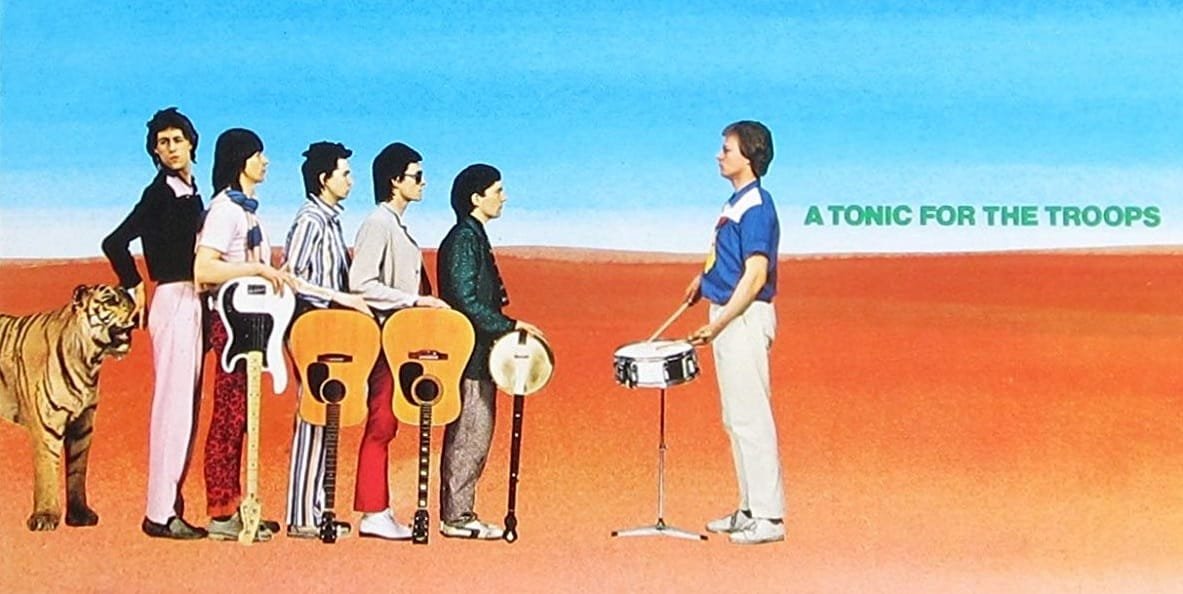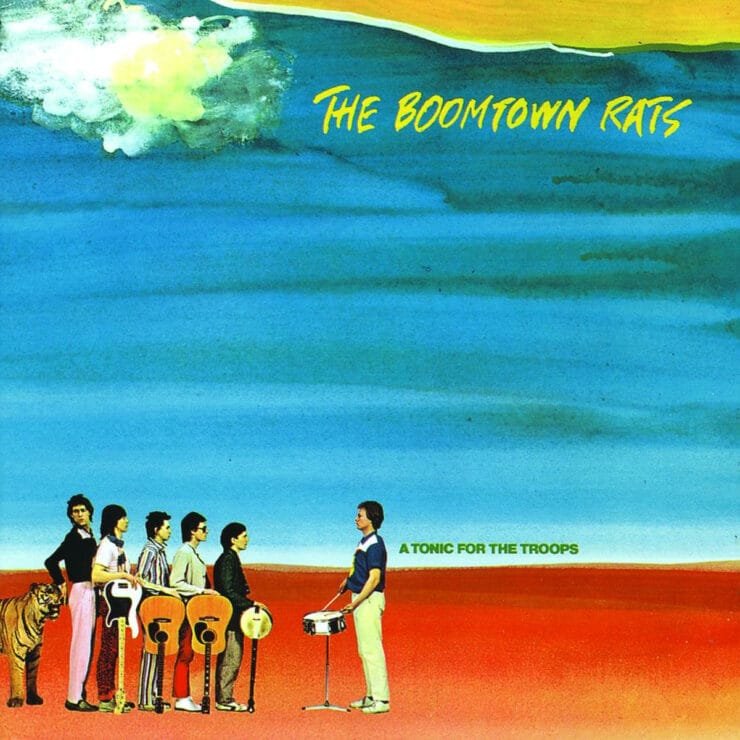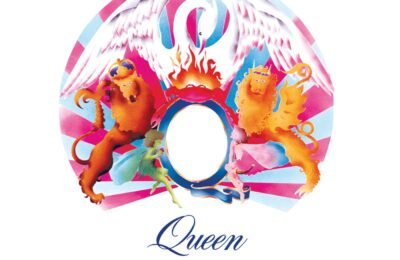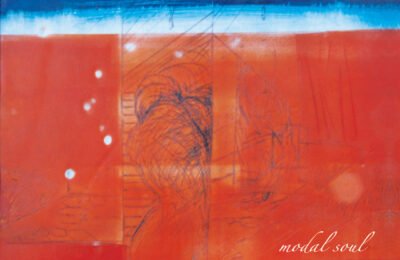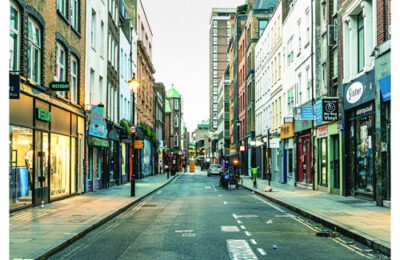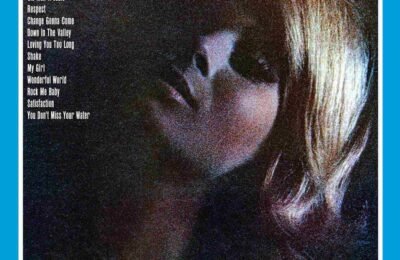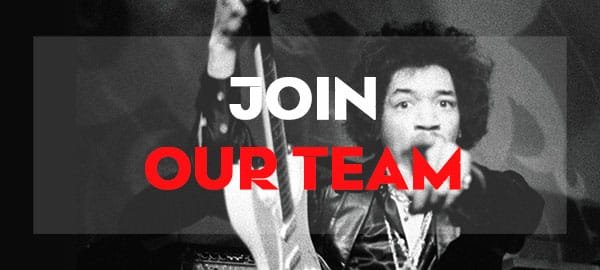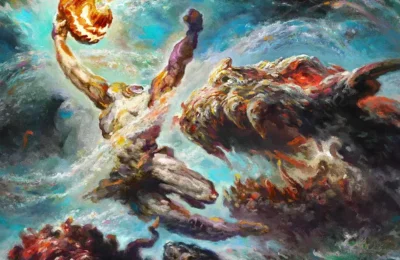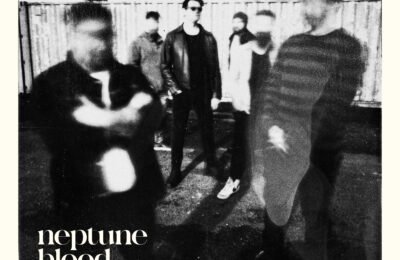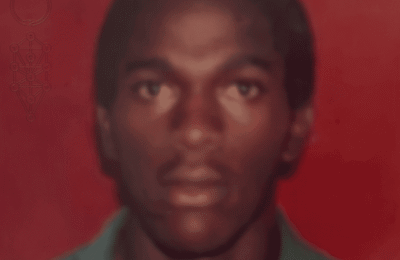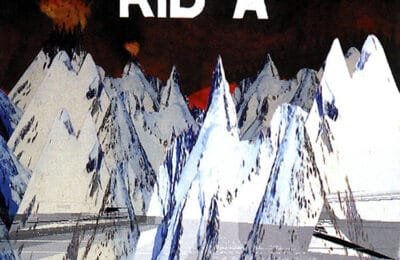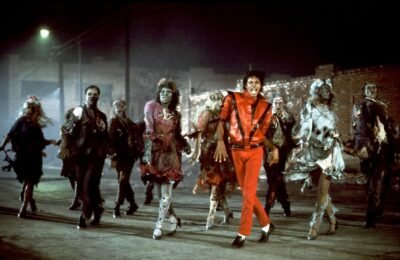The 1970’s were tumultuous times in Ireland; with civil rights issues, church-led domineering and political corruption rife. All of these socioeconomic issues had one hell of a soundtrack however, courtesy of Thin Lizzy, U2 and of course, The Boomtown Rats.
The Rats
One of the most iconic groups of Dubliners, The Boomtown Rats formed in 1975. Dún Laoghaire natives Bob Geldof, Garry Roberts, Johnnie Fingers, Simon Crowe and Gerry Cott formed the group, with blow-in Pete Briquette. Initially named The Nightlife Thugs, the band was renamed by Geldof. The name was a homage to the childhood gang of legendary folk artist Woody Guthrie.
The band found near-immediate success with the release of their debut single, “Lookin’ After No. 1″, which later became the lead single from their self-titled debut. Following this release and after touring with Tom Petty, the band returned to the studio. This time, under the watchful eye of Mutt Lange, they concocted one of the greatest new wave records in Irish music history.
Following the huge success of A Tonic for the Troops, the band continued to deliver some timeless singles. “I Don’t Like Mondays“ reached number 1 in the UK charts, with the song controversially referencing the Cleveland Elementary School shooting in 1979. Further singles, like “Banana Republic” have become Irish rock classics, but in many respects, The Boomtown Rats are rarely included in the same conversation as many other Irish legends.
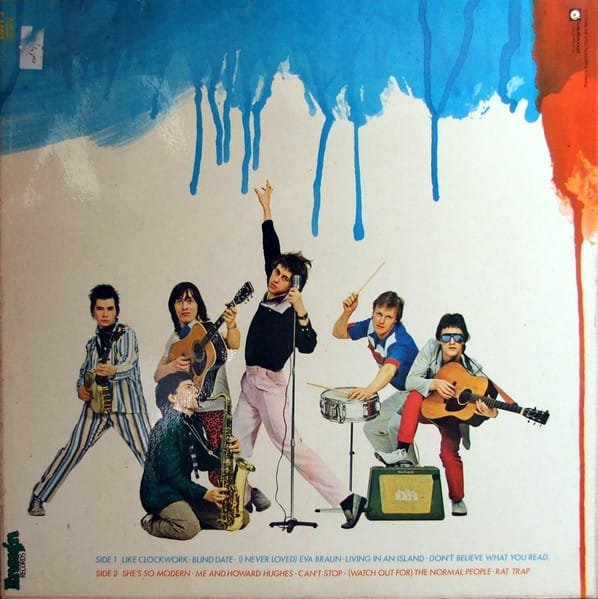
A Tonic For The Troops
Unlike its predecessor, A Tonic for the Troops saw the band take on a more pop-based approach. Still maintaining the raw punk elements, they wanted to cater to the UK market. The poppy melodies wrapped in a sarcastic punk style, decorated with quirky instrumentals throughout really made it one of the new wave pioneers. Every song has an edge to it, but the melodies are so infectious. The album, in my head, is one of the earliest examples of a dancey punk album. It can easily be mistaken for glam rock.
The chemistry the group has is fantastic. The guitar and bass play off each other so well, the drums are incredibly technical and the inclusion of a saxophone and keyboard really add to the character of the album. Speaking of character, there is no better frontman for such a group than Bob Geldof. Let us forget about how unbearable he can be and appreciate the charisma and talent he stamps on the album. The foundations are solid, and Geldof is truly the cherry on top.
Like Clockwork
“Tick, tock, tick, tock” signals the album opener, followed by the staccato bassline and snare roll. A relatively simple song instrumentally, it’s executed to absolute perfection. During the verse, the sound is so similar to that of The Clash. With really straight drums and guitar strumming, it’s a punk classic in many respects. Even the less conspicuous instruments serve their purpose in the track to great respect. The keyboard in the verse adds that extra layer to the melody, and the inclusion of the cowbell in the chorus is brilliant, as it mimics the sound of a clock.
Lyrically, of course, the song explores the passing of time. It’s a bit nonsensical, almost portraying the ramblings of a mad man. But appears to be the point. Who wouldn’t lose their mind seeking their purpose in life? Or at the mere idea of time as a concept? Focusing on the lyrics make the song feel like some sort of a fever dream, and the build up of the instrumentals towards the end, leading to an alarm snaps you back to reality.
Some amazing tom-tom work closely followed by a T.Rex style guitar riff provide a fantastic intro the punky “Blind Date”. Throughout the track, the drums and guitar are the absolute stars of the show. The riffs are heavy and distorted, while the drums are in a complete world of their own. The pace is fast and the breaks are sumptuous. It’s probably the only punk song I’ve ever heard that features a harmonica solo, which is beyond impressive. While the song is not a standout classic on the album, it’s definitely a fantastic showcase of the creativity the band had at the time.
(I Never Loved) Eva Braun
Continuing on the band’s wicked and wonderful creativity, the third track on the album is a doozy. “(I Never Loved) Eva Braun” is a tongue-in-cheek masterpiece written from the perspective of Hitler. All absurdity aside, the song is brilliantly composed. Imagery in the lyrics like “Of maps and generals and uniforms / I’d always liked the big parade / I always wanted to be adored” and “But underneath, I was really gentle / D’ya ever see me touch a scrap of meat?” sees Geldof humanise one of the most despicable men in history in quite comedic fashion. Even the instrumentals provide an apt backdrop to the performance, with the inclusion of marching snares in the outro. It’s absolutely absurd, but brilliant in every way.
“Living In An Island” follows with equally brilliant imagery. Once again, the instrumentals are adapted to provide a tropical sound in parts. The keyboard and guitar give a Caribbean vibe and the inclusion of a steel pan adds to that effect. Some of the lyrics are so clever, especially the wordplay used by Geldof in the transition from chorus to verse; “And if it do, then you’re a true blue sui- / Side by side, they walked into the tide”. The lyrical topics are grim, depicting the ease of dying due to island living, but again so cleverly executed.
The vocal delivery in “And the girl in the mac at the back of the shack / Put her head on the track and said “I think it’s better this way”” almost feels like a nod to “Rattlin’ Bog”. The homage to Irish music seems to appear again in the guitar, where Roberts hits a riff that sounds so beautifully similar to Thin Lizzy.
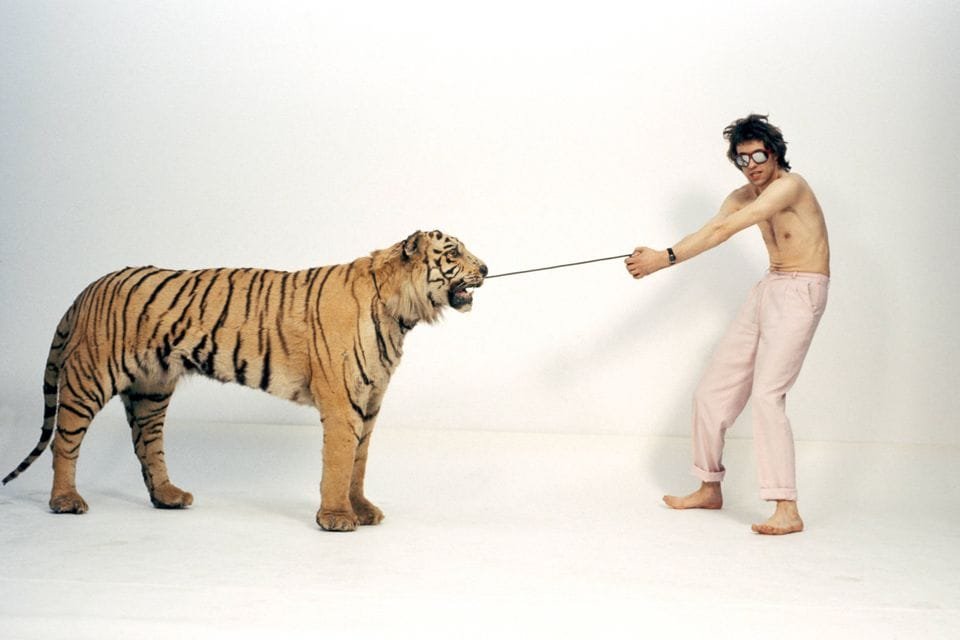
Don’t Believe What You Read
A bass-heavy intro in “Don’t Believe What You Read” feels like another Thin Lizzy tribute. The guitar and bass are harmonious throughout, with the two playing in true synergy. Half glam and half punk, the song is fast-paced again and features more of the iconic interplay between lead and backing vocals. Probably one of the most defining aspects of this album, this interplay almost portrays Geldof in conversation with a crowd. Lyrically it’s simple, advising the listener, or the crowd rather, not to believe everything they read. There is no punk sneer from Geldof here, but instead the delivery turns the song into an anthem, which is only supported by the beating of the drums.
The punk sneer does come back quite quickly in “She’s So Modern”. The vocal duties are heavily shared between Geldof and his backing vocalists and it’s golden. It’s sarcastic and somewhat outdated, as the girl is described as being “so 20th century” and “so 1970’s”. In a way, it adds to the humour, with the band knowing it won’t stand the test of time. The drums are so fast-paced and heavy on the snare rolls, there’s an edge throughout. The guitar solo is tonically brilliant, there isn’t a second of peace in the track. Another punk classic.
Me And Howard Hughes
Another mesmerising display of the instrumental talent on the album, “Me And Howard Hughes” is another wacky and wonderful track. The lyrical subject of the album appears to be a deranged business magnate. The individual is on a quest for power, inevitably leading him to “Wrap himself ’round in his Wall Street cocoon”. The hugely enjoyable vocals are overshadowed massively by the individual talents of the wider band. The tone on the guitar is superb, the bass plays riffs that shine through in lovely pockets and the keyboard is flawless. For me though, the star of the show is the drums. Simon Crowe’s ability to play seamlessly in the pocket while also ascending and descending with the many interludes and bridges is beyond impressive. There are certainly no favourites of mine on the album, but if there had to be one, this track is a very strong contender.
“Can’t Stop” is an odd one to follow. It’s completely absurd, especially instrumentally, with the keyboard playing nearly out of tune. Maybe a weak spot on the album, the song is a bit of a mess. But that isn’t necessarily a bad thing. The lyrics showcase the ramblings of a madman as they are nonsensical in many parts, and the instrumentals being just as messy (bar the drums) provide the background to this.
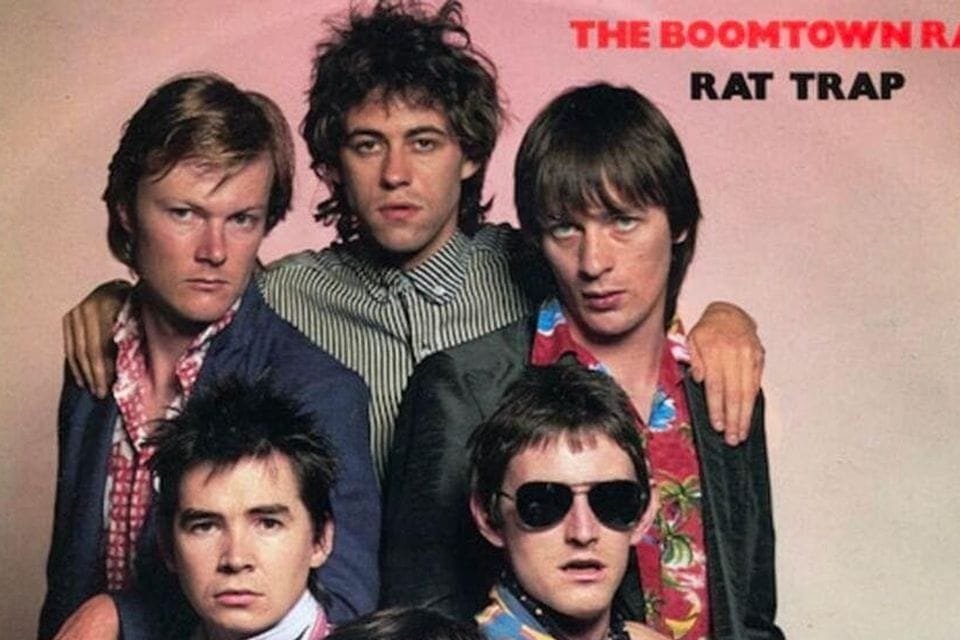
Rat Trap
The penultimate track, “(Watch Out For) The Normal People” is a hugely enjoyable mix of punk and new wave. The message is simple, conformity is everywhere and it’s important to be nothing like it. Geldof’s delivery sees a return to that amusing sneer, with a style akin to Johnny Rotten. The guitar tone mixes clean with distortion, giving that really cool sound we have heard so much of throughout the record.
The final track is one of their absolute bests. “Rat Trap” opens with apprehensive guitar while the piano plays the familiar melody. The song is an absolute masterpiece, painting the picture of 1970’s Dublin. While working in an abattoir on the banks of the Grand Canal, he penned the hit. The story portrays a young man called Billy, who is now aware of the lack of opportunities young people have in Ireland at the time; “Billy don’t like it living here in this town / He says the traps have been sprung long before he was born”.
The secondary character is in the same plight, “Oh, little Judy’s trying to watch Top of the Pops / But Mum and Dad are fighting, don’t they ever stop?”. Funnily, The Boomtown Rats performed the track on TOTP, ripping up a picture of John Travolta, who they had replaced as Number 1 in the charts. Instrumentally, the song is a great display of the band’s talents. Geldof has a wonderful saxophone solo, the piano is melodic and the guitars and drums are superb. The band gave everything they had on the last track and it certainly comes across that way in the performance.
Final Thoughts
A Tonic For The Troops is an Irish classic. The 1970’s had some incredibly talented bands on the scene, but The Boomtown Rats did not retain the same endearment as some of their compatriots unfortunately. It’s unfair, as this album was groundbreaking in many respects. The New Wave scene that followed this album shares too many similarities to be coincidental. The creativity, talent and ingenuity this album radiates is unfairly overshadowed by Geldof’s own notoriety.
The 1970’s scene had some trailblazing artists in this scene; Elvis Costello, Talking Heads, The Clash and The Jam to name just a few. But for me, The Boomtown Rats deserve to be held in the same high regard.
